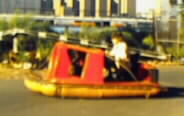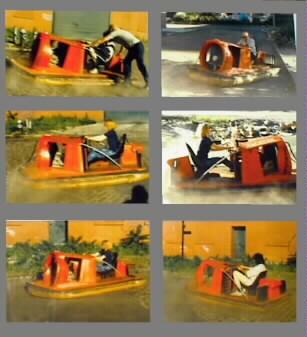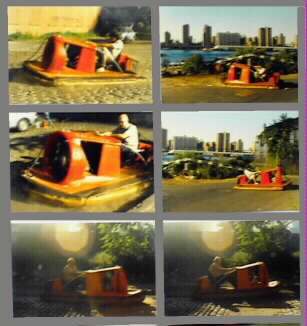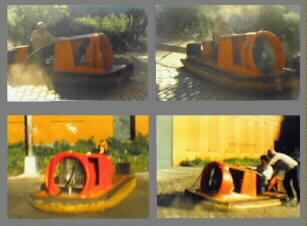DIDIK.COM
|
|||||||||||||
|
An accurate review of the Hovercraft Many, many years ago, when I was still in high school, I dreamed about building and flying an advanced, sleek, enclosed, comfortable, ultra modern hovercraft, that would be insulated from sound and ideal for all climates and conditions. There were many factors that I had not considered and only became know with actual experimentation, that greatly effected my dream for the perfect form of advanced transportation. My first experience with a hovercraft occurred when I traveled from Ramsgate in England to Calais in France over the English Channel* in a huge hovercraft that transported both trucks and cars. This was long before the Chunnel was built. The passenger section of this enormous hovercraft was much like a commercial airline, with similar sized seats, though the windows were much larger, being more of the size that one would find on a railroad train. I made sure that I had a window seat, so that I could get the full experience of the flight. Before the flight, a "stewardess" gave various safety announcements, but to my surprise, seemed to make a major point of the sickness bag, stored in front of all passenger seats. I didn't pay much attention to this. Well the big moment came, and the four large propeller engines started. You could feel and hear the power of the engines. There was also a large amount of vibration. The craft lifted off of the ground, though one did not feel the sensation of flying and headed towards the water. As soon as the craft started to fly over water, my window was instantly covered by a film of watery mist and I really could not see anything outside. As the craft picked up speed, it rocked back and forth, similar to a boat and the vibration kept up or perhaps even got worse. Within a few minutes, some people put the sickness bags to use, though I was not one of them. About 25 minutes later, we arrived in Calais France and the trip was over. I, and probably all of the other passengers, were happy to be back on land. My first hovercraft flight was very different than I had expected. My dream of developing and building a sleek, quiet hovercraft, however was still with me. A number of years later, I purchased an 8 foot/ (2.5 meter) in diameter inflatable raft, built a thin, light weight frame and in the center of the raft, bolted on a 4HP gasoline powered leaf blower. I also added an 6 inch / 15cm skirt around the edge of the inflatable disk. The homemade hovercraft did lift off of the ground, though just barely. I could control it by leaning in one direction or the other, but when I leaned, some air would escape the compressed air "envelope" and as a result, the skirt would drag on the ground. The craft was not very useful, but I should add that I am 6'3" (191cm) and weighed, at the time, about 180lbs/ (about 81kg). If I weighed less, or if I had an extra 2 hp of power, the craft might have performed better. Still, it was a lot of fun to operate. I did not give up my desire to develope and build a better hovercraft. I purchased the red hovercraft below and rebuilt it. It was indeed a much better performer than my first attempt, but it soon became apparent other factors that were more difficult to overcome. The large 30" (75cm) in diameter aluminum propeller could potentially be very dangerous. A metal safety grating that I placed in front of the propeller, reduced the efficiency of the machine. The sound was incredibly loud. The craft had strong vibrations, but not as bad as one might expect. When flying over land, the propeller suched up dust and shot it back into the occupant. It was important to wear eye protection. Wearing a protective suit, such as a leather motorcycle outfit would also have been a good idea. The largest problem however, was control. It was possible to change the direction of the craft, but since the craft was flying about the ground, there was very little friction except for air drag and the skirt occasionally touching the ground. Thus the craft acted more or less like an ice puck, sliding on the surface. The direction that the hovercraft was pointed could easily be pointed in a new orientation, however the hovercraft would continue to travel in the original direction and only gradually change to the desired direction of travel. Turns required a large arch. This made the craft impractical to operate on city streets and to make turns. Airplanes can bank when turning, however a Hovercraft can not. To compensate for this, I considered installing very light pressure wheels on the craft that barely touched the ground, so that the craft would at least have some potential ground contact, but this did not prove to be very practical. I also considered the use of a larger gyroscope to some how assist in rapid turns, but I did not develop this concept to completion. Many of these problems can probably be overcome with additional development over time. Please read more specifications below.
*Those
interested in global transportation, under sea tunnels and ultra
long bridges may find my Trans Global Highway proposal fascinating.
This hovercraft is an old non-Didik design. It was constructed using a 110HP McCollough 2 cycle engine and a 3 blade aluminum propeller. The body is made out of shaped Styrofoam covered with fiberglass. The entire craft weighs approximately 300 lbs and is capable of flying over objects up to 8" high. The top speed at on solid flat ground is about 25 miles per hour. The speed on water is only 15 mile per hour. The lower speed is a result of wave action and water resistance and displacement. The top speed on ice exceeds 45 mile per hour. This non Didik hovercraft is shown since it is interesting how the designers approached the problem of weight reduction and at the same time, providing high strength. One problem with such styrofoam designs is that styrofoam is destroyed if it comes in contact with gasoline and so it must be completely shielded, such as with fiberglass. Some people have used water soluble white or wood glue as a coating over the styrofoam. Fiberglass over the styrofoam creates a very strong body, though creating a mirror finish on the fiberglass can be difficult. If you use auto repair body filler to smooth out the fiberglass, the weight of the body increases. Further, body filler is not as strong as the fiberglass and, in the case of a hovercraft, it can come lose from the vibrations. On the other hand, you can sand the fiberglass, but in order to do this, again you must have a thicker fiberglass shell, which also dramatically increases the weight. Nevertheless, this technique is a way to create interesting shapes quickly and relatively cheaply. Frank Didik built a one person inflatable hovercraft, using a low HP leaf blower as the air supply. The unit was approximately 8 feet in diameter and had a 6" skirt around the perimeter. Steering was accomplished by leaning towards the direction that you wanted to go. This simple unit was able to fold into a small suitcase and was capable of lifting a 185 lb person, however the low energy output of the engine did not provide adequate power to propel the person at more than a walking pace. Starting in the late 1940's, some people have built small hovercrafts using a basic 3.5 to 5 HP grass cutter engine and a 18 to 25" propeller facing down. These units are very noisy and tend to vibrate very badly, but they do work. As with the Frank Didik designed inflatable hovercraft mentioned above, these units are steered by leaning towards the desired direction of travel. You can probably find information on these units on other internet sites or perhaps find plans to build them behind many science and hobbyist magazines.
|
DIDIK.com Main Menu
|
www.DIDIK.com
Copyright©
1987 - 2012 by Frank X. Didik
All
Rights Reserved
DIDIK®
is a registered Trademark at the
U.S. Patent and Trademark Office.
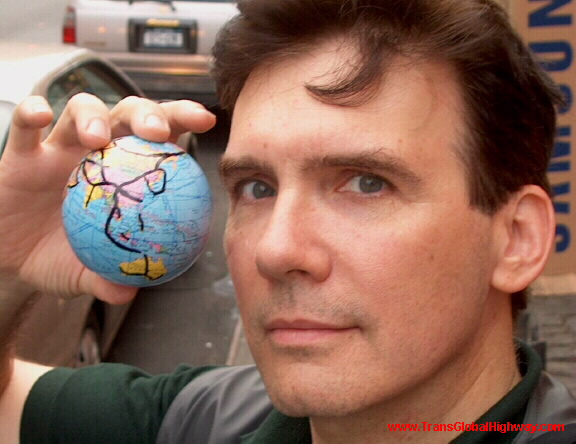
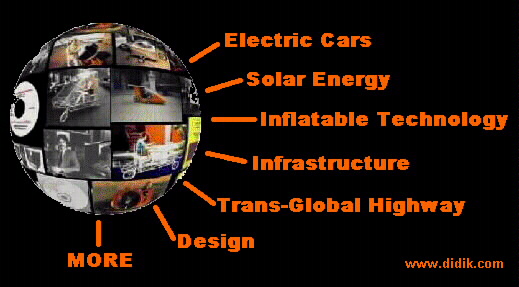
![[IMAGE]](dhv.jpg)
